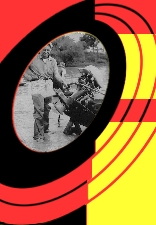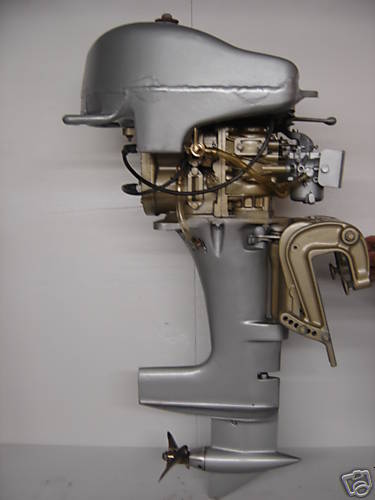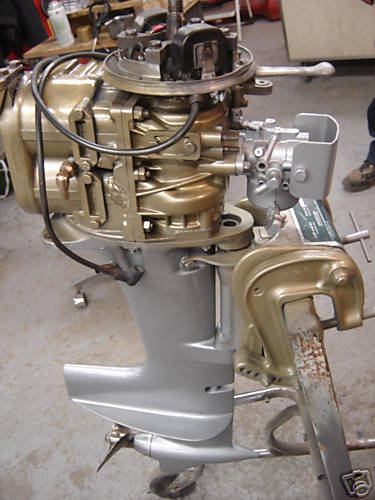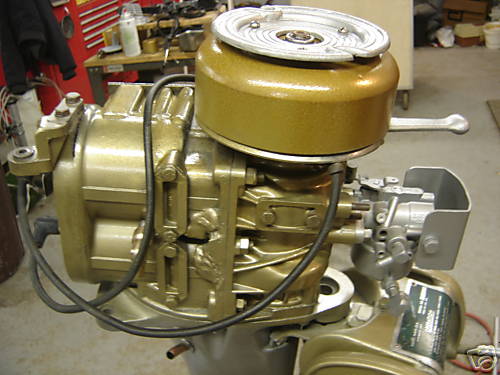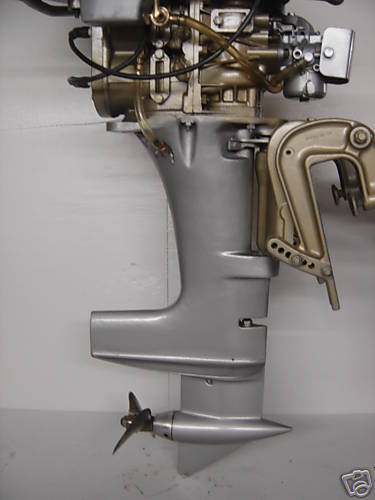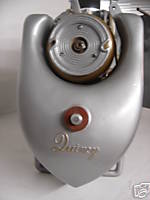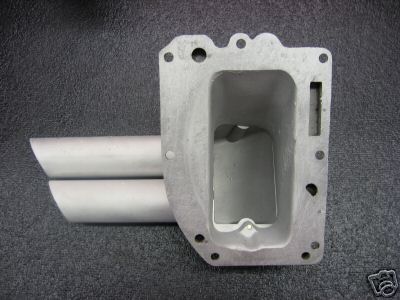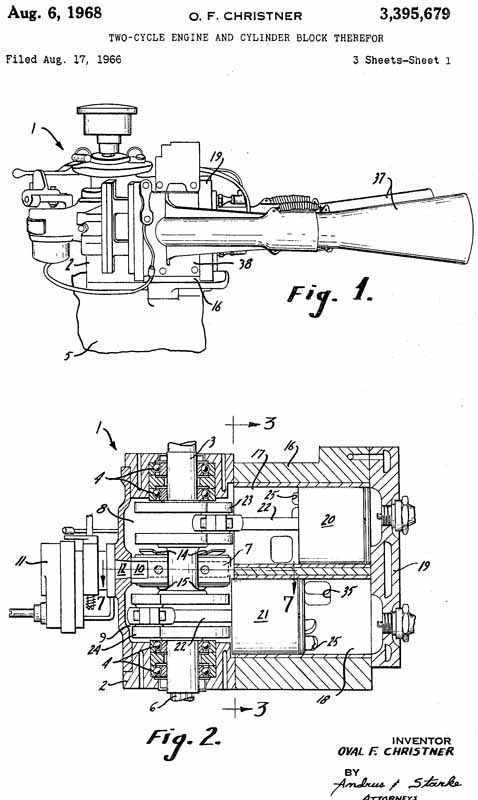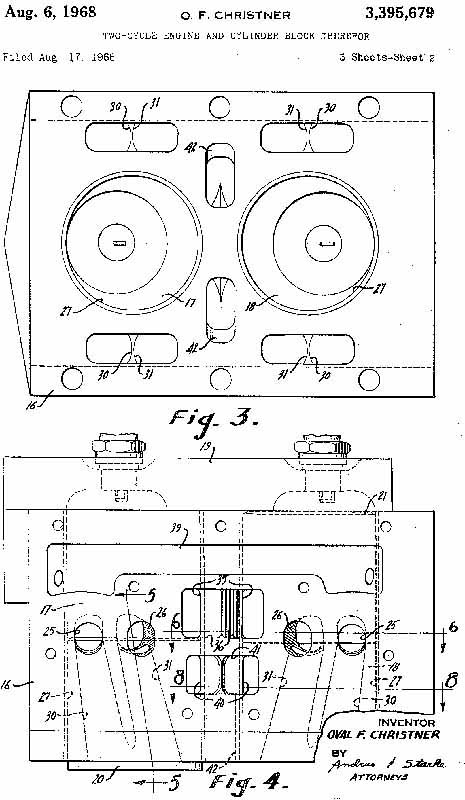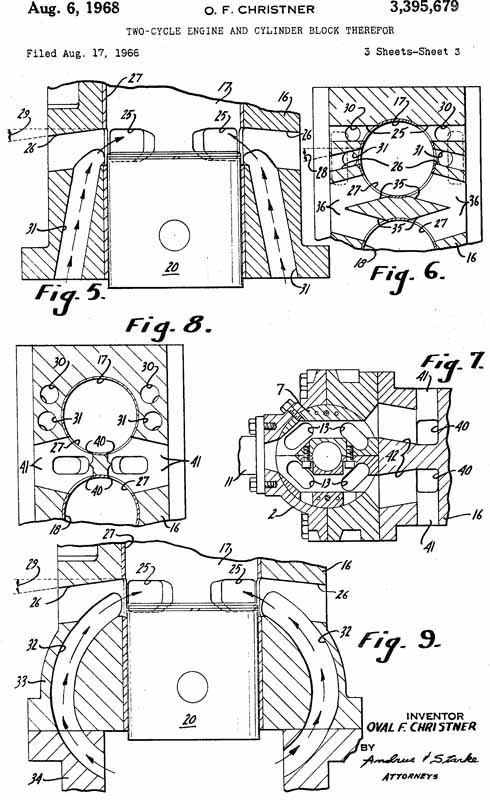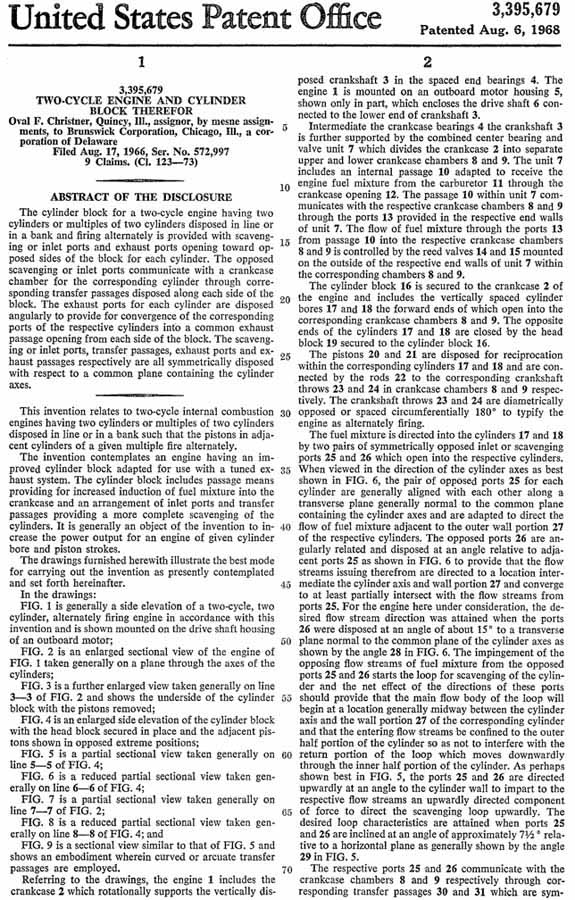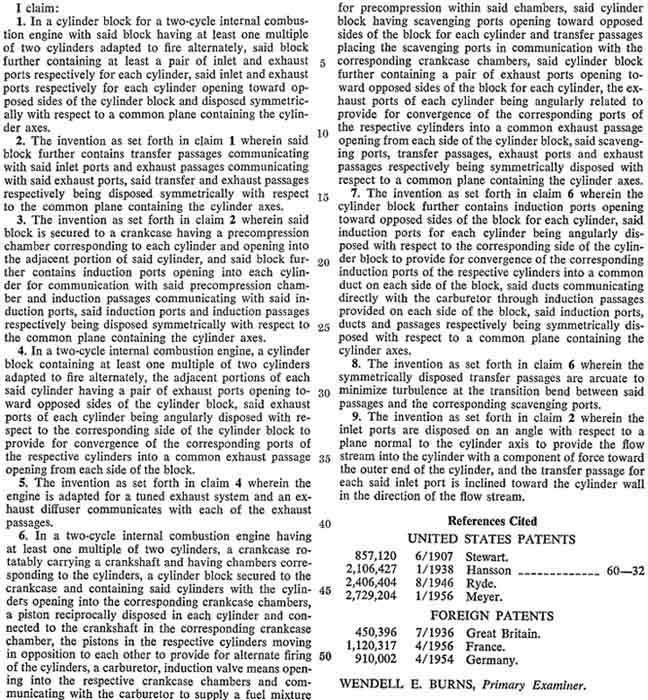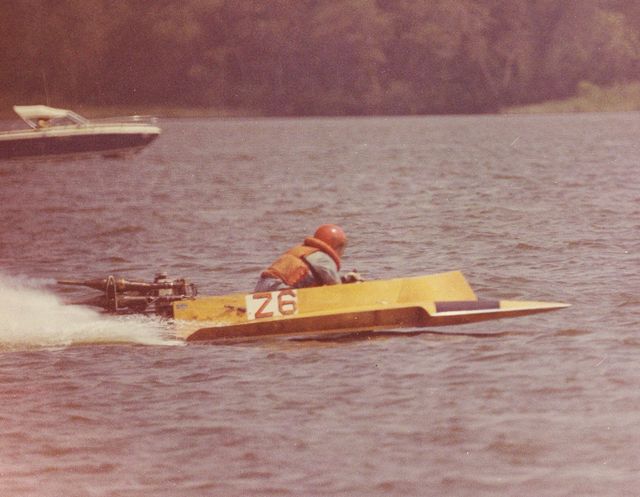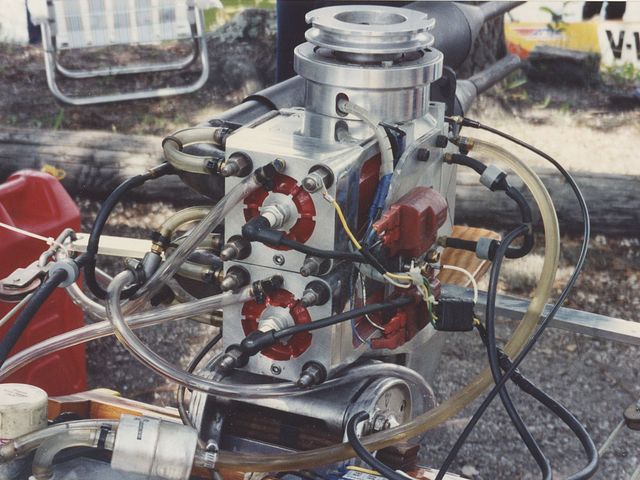 |
 |
Innovations, R&D Projects
| |
O. F. Christner was well known as an innovator in racing and outboards. According to Christner, Quincy Welding produced a total of 1881 Merc Alky engines between 1/10/48 and 3/15/63. He stated that the number of Alky engines built using all Mercury parts which had padded cylinders to bring up the compression ratio to 14:1 for alky use was broken down as follows - A class = 349, B class = 463, C class = 311, D class = 430 and F class = 328.
|
| |
Here are some of the innovative designs and achievements by O. F. Christner over the span of his almost 50 year career in outboard racing.
|
1950 KG7 Experimental Exhaust Valve
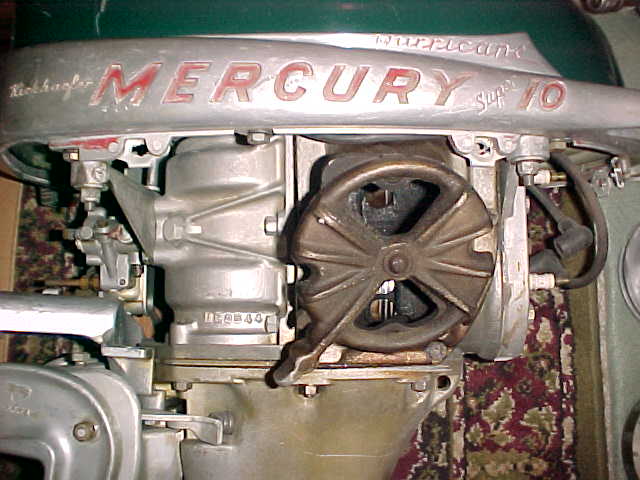 |
During the late 1970's and early 1980's, many noteworthy Japanese 2 cycle racing engine manufacturers were experimenting intensely with variable exhaust port timing devices. However, O. F. Christner's Quincy Welding was already involved in that technology in 1950, as shown in this photo of a KG7 Merc with a variable exhaust valve designed and developed by Christner. This rare and unique motor is still in existence and in the private collection of a FL collector.
|
Padded Quincy Merc Cylinder
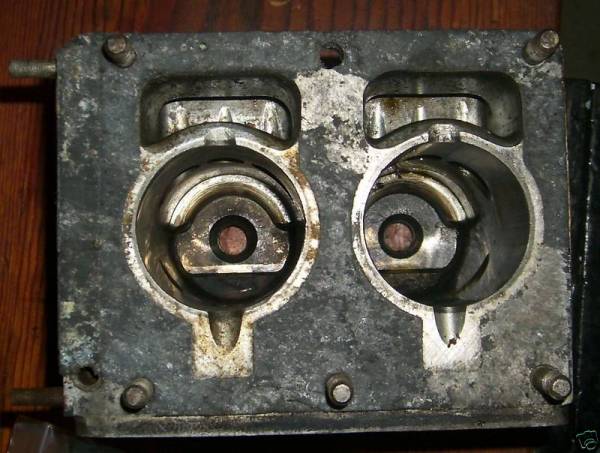 |
250cc Quincy padded Merc. This type of innovation is what made Christner's Quincy Welding world famous in outboard racing circles. It converted docile fishing engines into methanol, fire breathing race engines that not only competed, but at times dominated against pure, by design, foreign racing engines. On the earliest examples, O. F. Christner hand ground and filed the pads that were then held in the combustion chamber with screws. Some of those early examples are among the most highly prized by collectors.
|
Sand Cast, Split Crankcase
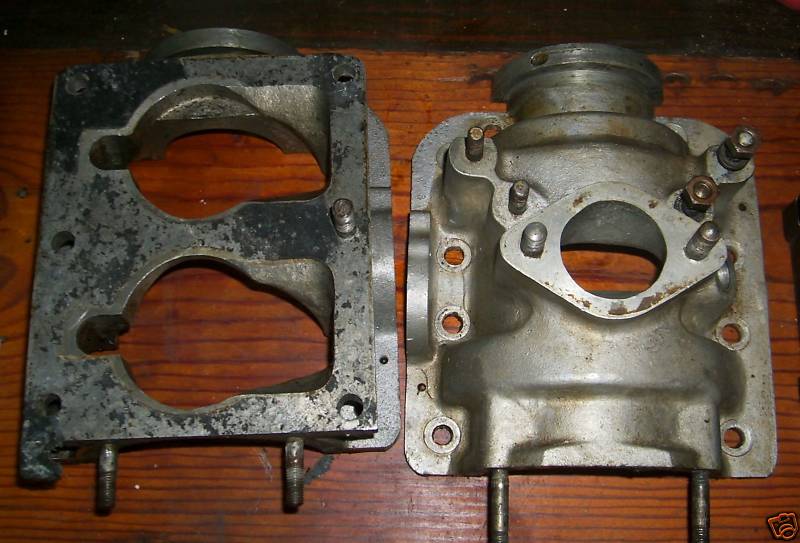 |
This is an early example of a Quincy Merc sand cast, split crankcase for an A-250cc or B-350cc 2 cylinder engine. Not only were they unique for the time period, Christner's Quincy Welding experimented with variations of their capacity, aka stuffing effect, and their internal contours to effect the swirl mixture of the crankcase compression. It is now believed that Quincy Welding was a pioneer in this experimentation of the 2 cycle performance outboards in the 1950's.
|
Brand new Quincy Welding modified Mercury 20H Alky - 1955
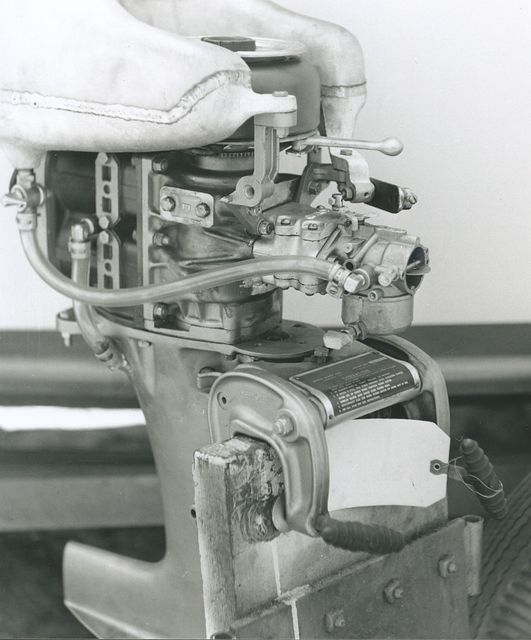 |
This photo was taken from a 53 year old negative that managed to survive many moves by our parents, back and forth between Quincy, IL and Sarasota, FL. This is a brand new 1955 Quincy Merc Alky being delivered to a customer at a race in the midwest. It still has the shop tag on the clamp bracket. Take note of the custom Quincy Welding fuel tank, water routing system and mump reed valves on the crankcase. Back in that era, Quincy Welding converted many brand new, out of the box 20H's from Mercury to alky race engines.
|
Brand new Quincy Welding modified Mercury 20H Alky - 1955 (view 2)
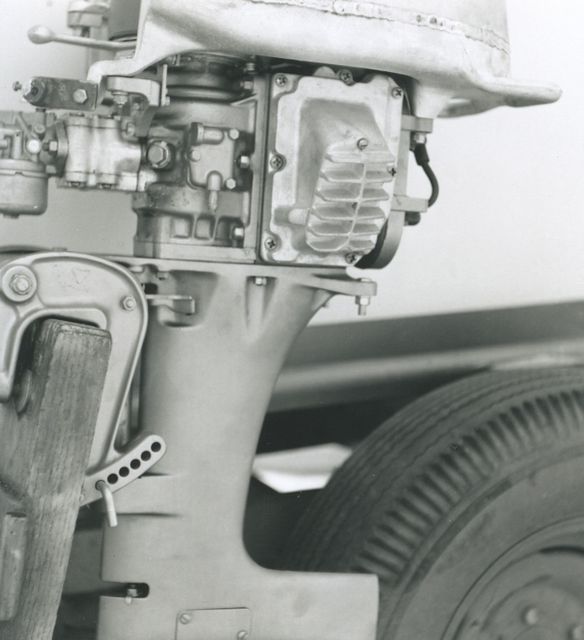 |
This picture shows the very first attempts Quincy Welding made towards exhaust tuning. It has a Quincy exhaust housing with a ribbed cover. Most racers at the time (this was pre-megaphones) simply removed the cover plate and went racing with open exhaust. The next step in Quincy Welding's development in exhaust tuning was the famed twin headers that looked like short vacuum cleaner pipes mounted to take the place of the ribbed cover on this housing. Looking back, in the beginning we did not have a filler block to connect the block ports directly to the exhaust tuning header. We obviously learned as we progressed.
|
Quincy Modified 20H
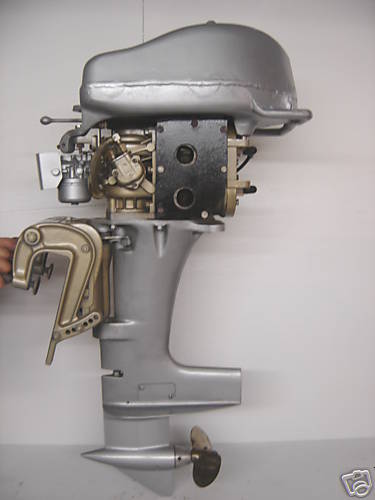 |
This is a rare, original Quincy Modified 20H that was offered for sale in April of 2008 on ebay.
|
Quincy Welding Life Jacket
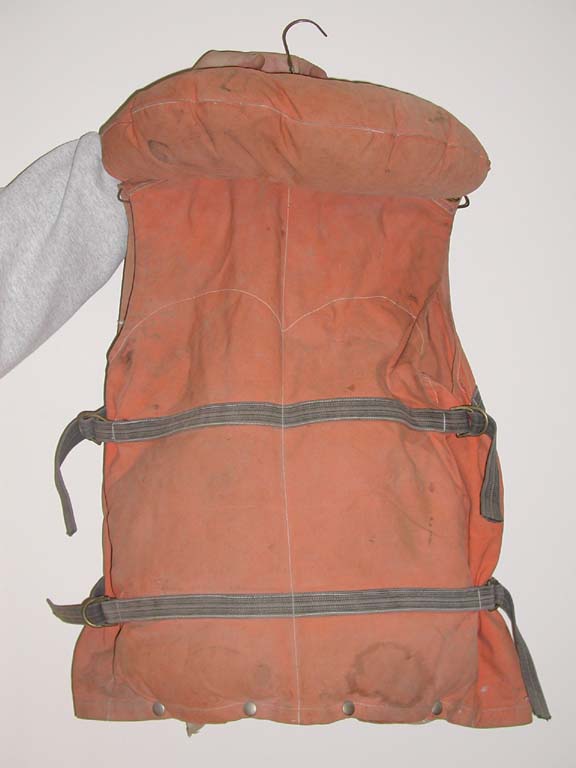 |
How many of you know that O. F. Christner designed and had manufactured an outboard racing life jacket? He felt the life jackets being used at the time did not offer enough protection, so he designed what he felt was a better life jacket.
|
Quincy Mods
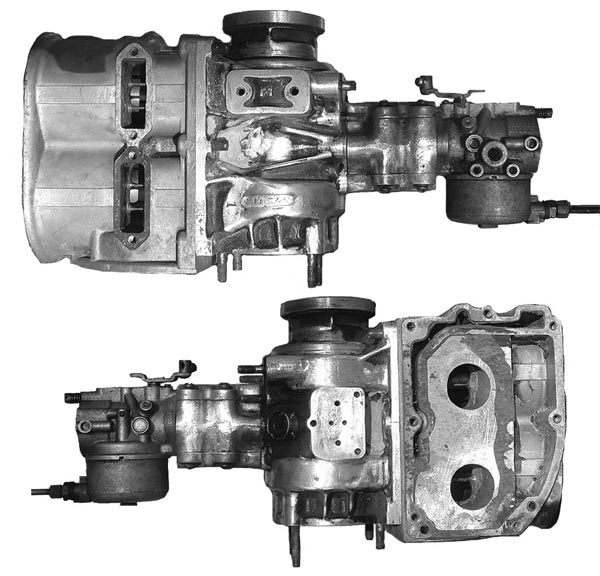 |
In a 1961 Quincy Welding advertisement, Christner proclaimed "Say, Ole Chap, Speaking of Records! Alexandria, LA, June 25, 1961, SIX Records Broken in ONE Day, These are five mile competition records set with good dependable hot Mercs." The records were in A Hydro (Tommy Christopher, driver), B Hydro (Tommy Christopher, driver), D Hydro (Jim Schoch, driver), A Runabout (Tommy Christopher, driver), B Runabout (Billy Mays, driver), and C Runabout (Freddie Goehl, driver).
|
Quincy Throttle
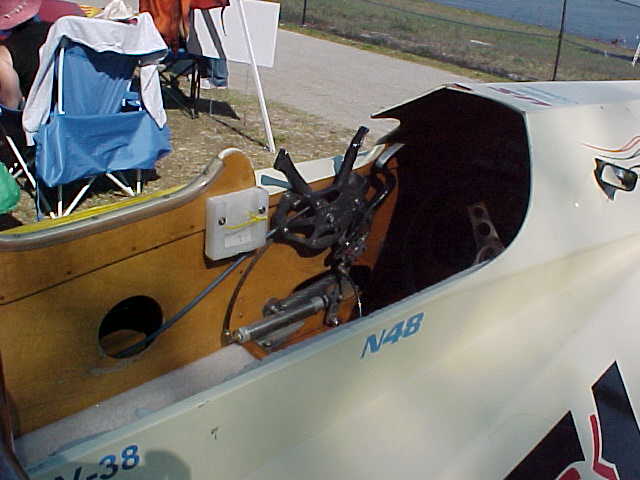 |
Quincy Throttles are in still use today by boat racers. We found this one in a boat at the Lake Wales, FL, races in 2007.
|
Quincy Gravity Tank & Throttle
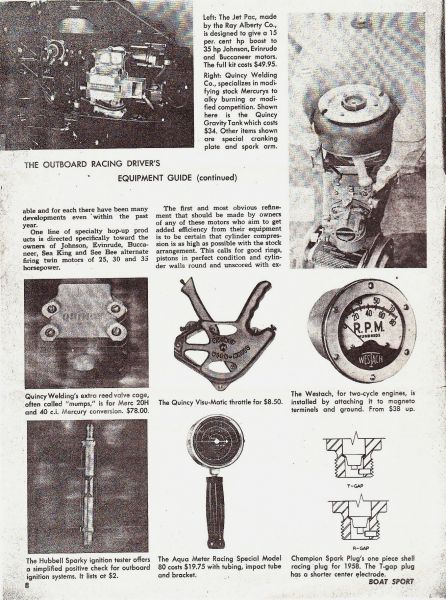 |
Article from an early Boat Sport magazine titled The Outboard Racing Drivers Equipment Guide.
|
Quincy Mumps
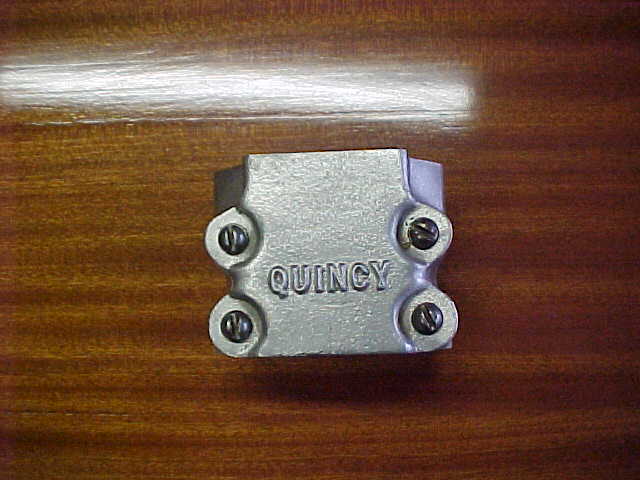 |
Almost all 2 cycle race engines currently use multiple, external reed valves. Did you know Quincy Welding pioneered their use in 1955 in conjunction with diametrically opposed internal reeds? They were referred to by racers back then as the Quincy Mumps.
|
Quincy Mumps - side view
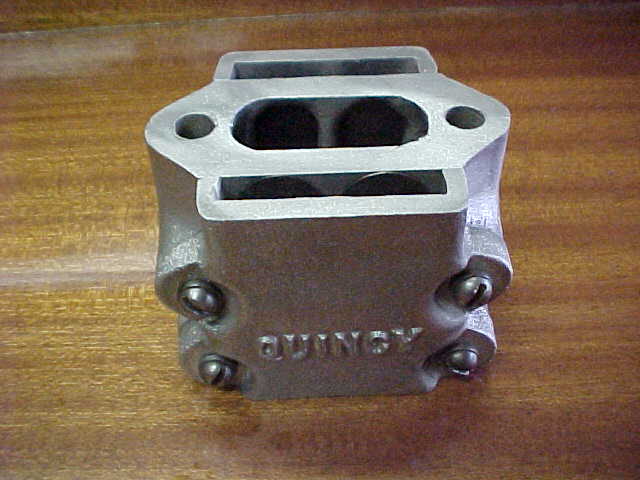 |
My father, O. F. Christner, told me that we had, in effect, 12 valves on the 20H Quincy and that the Mumps were quite successful in their day. Considering how many were manufactured, they are extremely rare to find now. In fact, this is the first set I've actually seen in many years and they happen to be in mint condition and in the original Quincy packaging. What a treasure. Paul.
|
Quincy Exhaust
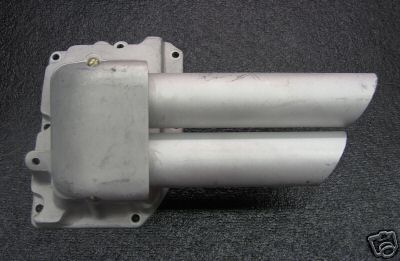 |
This custom made Quincy exhaust fit a Mercury KG7, KG4, KE7 and KF7.
|
Quincy Exhaust Cover
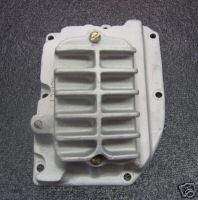 |
Custom made by Quincy Welding, these exhaust covers fit Mercury KE, KF and KG 7 motors.
|
Converging Pipes - another Quincy Welding 1st
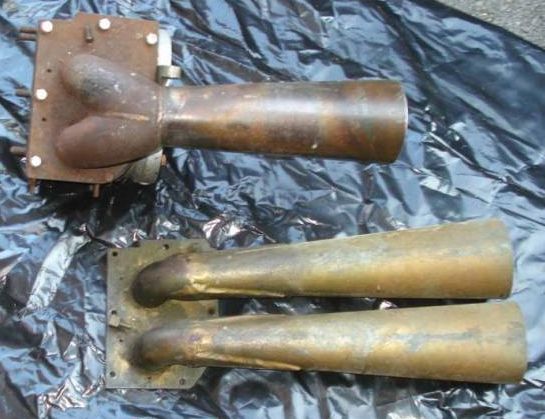 |
Here is a photo of Quincy's patent pended converging exhaust system (top) as compared to the previous, individual per cylinder megaphones (bottom). The emergence of this new exhaust system took the outboard racing world by surprise. The performance with the new system far exceeded the individual megaphones per cylinder, as the converging exhaust system not only maintained the previous top speed of the individual pipes they replaced, it also dramatically increased the acceleration of the boat to such a point that the laps times around the race course were significantly reduced. As O. F. Christner always said, "It's the firstest, not always the fastest that wins the race." Photo courtesy of Alan Ishi.
|
Quincy Pipes
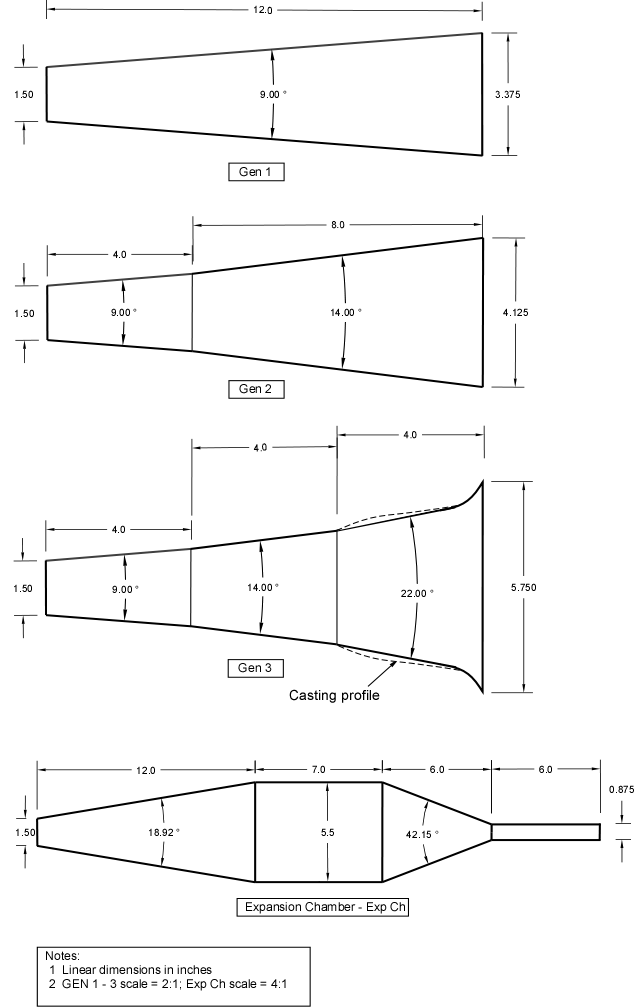 |
(Drawings by Frank Volker)
The drawing shows the 3 main generations of pipes developed at Quincy Welding from 1964-1972 for the Loop engines, as well as one experimental expansion chamber. Drawing #1 - These were used in the early (64-66) work and were probably close to the old deflector engine tapers. There was no dyno during early development, so all testing was done in a test tank with a test wheel that was about 5 1/4 in. dia. Often, the engine would tend to hang at 6000-6500 RPM. Entries in the test book contained phrases like "....slight hang at 6000, then good acceleration to 8600-8650" or "can't get thru 6000". The FB's would sometimes run these pipes at 1" off. Drawing #2 - These pipes are probably mid to late 1966. Things really took off then. I recall rolling up a piece of aluminum and tig'ing it to the GEN 1 small-end tapers. They worked well first time out and became our new pipes. They were usually run at full length or 1" off. Drawing #3 - These are sometimes called "bells" or "flared-end pipes". These pipes were designed and engineered by Frank Volker while employed by Quincy Welding. Drawing #4 -
Experimental expansion chambers also designed by Frank Volker.
|
Quinsky Engine
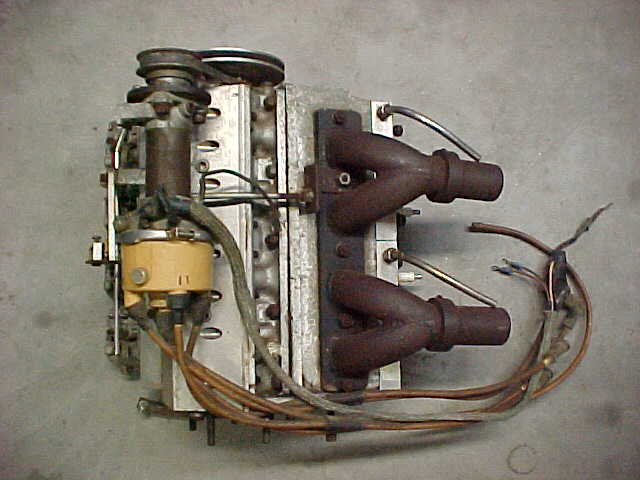 |
This engine was not created by Quincy Welding. However, it came about indirectly because of Quincy Welding. It was a creation by the late, great Stan Leavendusky aka Stan's Custom Pistons. A lot of people may not know it, but most Quincy Loopers used Leavendusky piston blanks as the building blocks for Quincy pistons. Stan was quite an innovator in the evolution of the Quincy Looper's success. His son, Butch, was also a top notch pro racer, especially in the runabout classes. Stan took it upon himself, with his son's help, to create and develop the Quinsky, based on the Konig internal specifications (porting wise and layout) with the conventional Looper Merc-Quincy exterior dimensions (stacked cylinders, not opposed) and crankshaft. The Quinsky was an experimental motor with a lot of good ideas.
|
Quincy Stacks
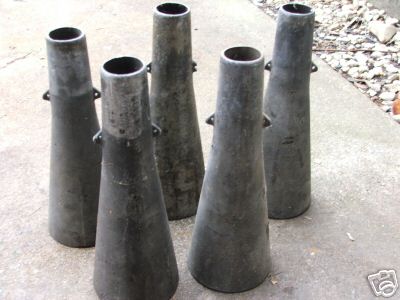 |
In O. F. Christner's own words: "We (Quincy) designed the very first set of stacks. The first stacks that we made were for the A Merc which were a very close copy of the stacks on the A Konig (shortly before Konig went to the tuned chambers). These stacks increased our speed some 5 MPH on a runabout which was FUN! As we went up the line like B, C, D and F, we used the near same dimensions. They were right for the A and the C but too small for the larger engines. Our hind-sight would tell us to make the larger engine stacks both larger and longer, but in the heat of the day we were so intent on chasing down the Konigs that we didn't have time to do it all." He went on to say "The change-over to the converging style elbow resulted from trying to make something the Konigs couldn't copy, as their B at that time had the exhaust coming out of the opposite sides of the engine. Our acceleration gain didn't last too long as the rascals simply rotated one of their cylinders and we were soon making header plates for these Konigs too! Of course the pipes helped both the gas and alky engines."
|
Original Prototype Looper Cylinder
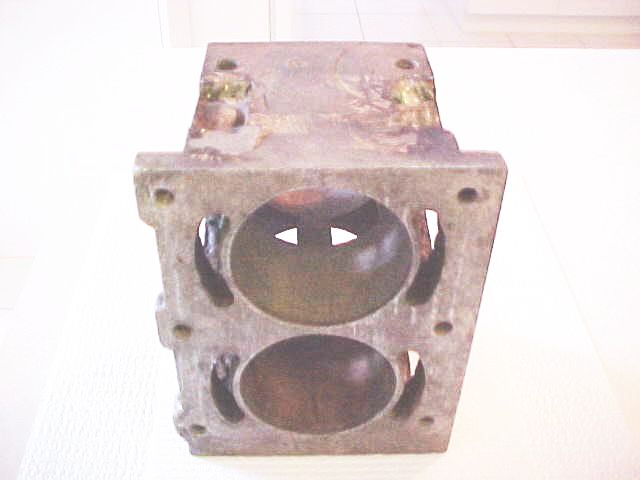 |
Quincy Welding and O. F. Christner are probably best known for the Quincy Looper engines. In a 1999 interview, O. F. Christner explained "I developed the Looper engine with no help from anyone. We had to get more power as the Konigs were beating the hell out of us and we couldn't get it with the deflector pistons, as the dome would simply melt right off. The Merc bore centers were too close together to use the porting that others did so it became necessary to change things. It was necessary to exhaust all of the cylinders out BOTH sides. This arrangement (Patent #3,395,679) worked quite well for some years. Now, since I retired from the racing business, the Japanese are into it and the costs have grown quite a bit." As to the Merc-Quincy Loop (Looper) Engines, which used the Merc crankcase in the A & B classes (at first) but used the Quincy Welding crankcases in the 4 cylinder models, O. F. Christner stated that Quincy Welding built a total of 759 Loopers between 11/30/63 to 7/15/76 when a newer model (the Quincy Z) was designed. The number of engines made was as follows: FA = 218, FB = 243, FC = 103, FD = 121, FX - 74. (Most of FX were 44's, some 60's and a few 66's.) In a 1967 advertisement, Quincy Welding proclaimed "Merc-Quincy Loops, Holder of More Competition Records than any other Motor in the History of Racing."
Click Here for more pics of 1st Quincy Looper Cylinder
|
Quincy Looper Patent - page 1
Quincy Looper Patent - page 2
Quincy Looper Patent - page 3
Quincy Looper Patent - page 4
Quincy Looper Patent - page 5
Quincy Looper Patent - page 6
The legendary Quincy Looper Beast
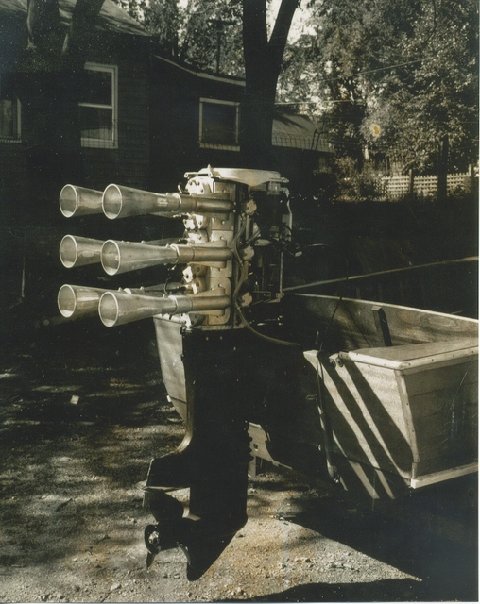 |
This is a photo of the elusive, legendary Quincy Looper Beast experimental engine that was over 90 ci of fire breathing methanol power. It was the biggest Quincy Looper ever made in 1965 and probably the biggest Looper outboard engine in general at that time. The Quincy Beast came about as a covert research project between Quincy Welding and Mercury Outboard corporation. There were actually 3 powerheads produced. One was always at Mercury in Wisconsin for testing there, one was always at Quincy Welding for testing and development, and one was a core engine shortblock that traveled back and forth between Quincy and Wisconsin. The very first time O. F. Christner took the Beast out for water testing on the Mississippi River was in the spring of 1965. Along with O. F. were his 2 son-in-laws Earl Hull and Frank Volker (both successful Quincy Welding race drivers) and his son, John. That's 4 people in a 15 foot Dunphy. It had so much vicious torque that our father had to very carefully open the throttle so as not to barrel roll the boat. The sound it made was so incredible that his youngest son, Paul, heard it run that day approximately 2 miles away at his grade school. A very prominent Quincy resident had a huge V8 powered California built V-drive that he was very proud of. He happened to be on the river that day and pulled along side of the Quincy crew and challenged them to a race on the river. As the story goes, the Beast, when O. F. nailed the throttle, not only left the huge V8 V-drive behind, it almost threw son John out of the back of the boat because John wasn't hanging on tight enough. The Beast beat the V8 so badly that day that it's owner, when O. F. finally let off of the throttle and the other guy caught up, tried to ram the Quincy Welding crew's boat. O.F. avoided the other boat's contact by taking off again in a burst of speed. As the legend continues, the one engine at Mercury was lost or destroyed, the 2nd powerhead that Quincy Welding kept was actually still in the Quincy area as late as the early 1990's. Son Paul actually had an opportunity to acquire it and take it back to Florida, but didn't have the room to haul it back at that moment and was arranging shipping when the engine "disappeared." Paul was told it was melted down for scrap, for beer money. We don't know if that is what actually happened to that engine. The 3rd Looper Beast was on a mini pulling tractor for many years in the midwest and was quite successful at county fair tractor pulls. Occasionally we hear stories about where it is located but it has not been found to date. The legend of the Looper Beast continues.
|
1st Quincy Looper "Z" Cylinder
David Whitford with a Quincy Z - A 250cc Engine
Quincy Z 350 engine
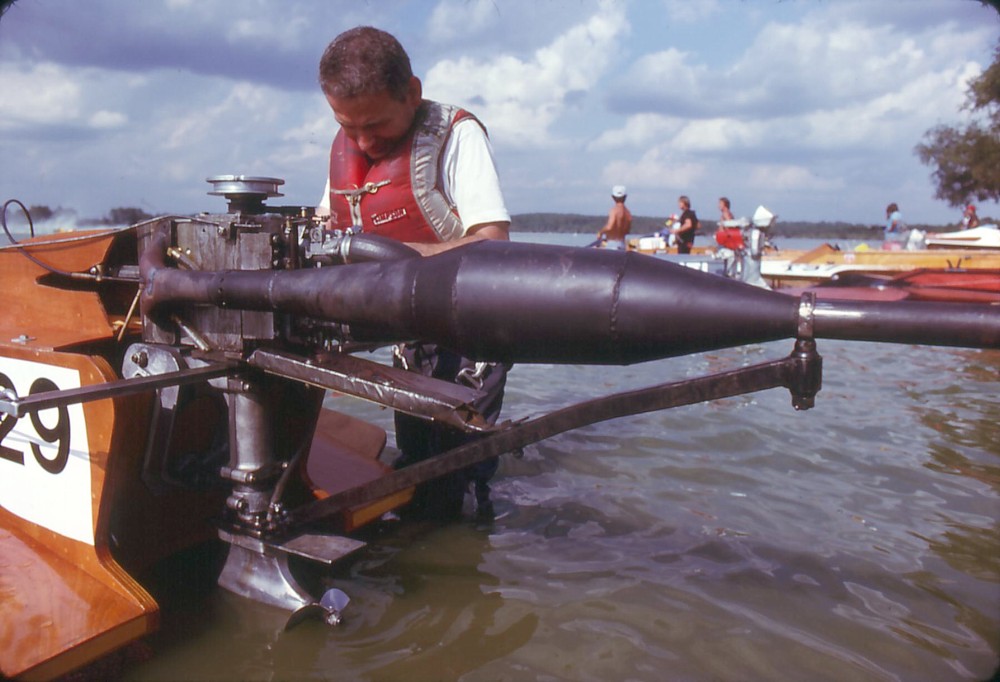 |
This Quincy Z 350 engine was owned by Larry Latta.
|
3 Cylinder Quincy Z engine - B class
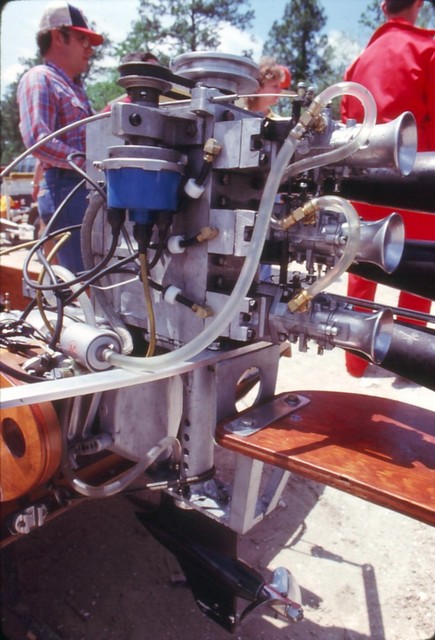 |
(photo courtesy of Wayne Baldwin)
|
|
|
